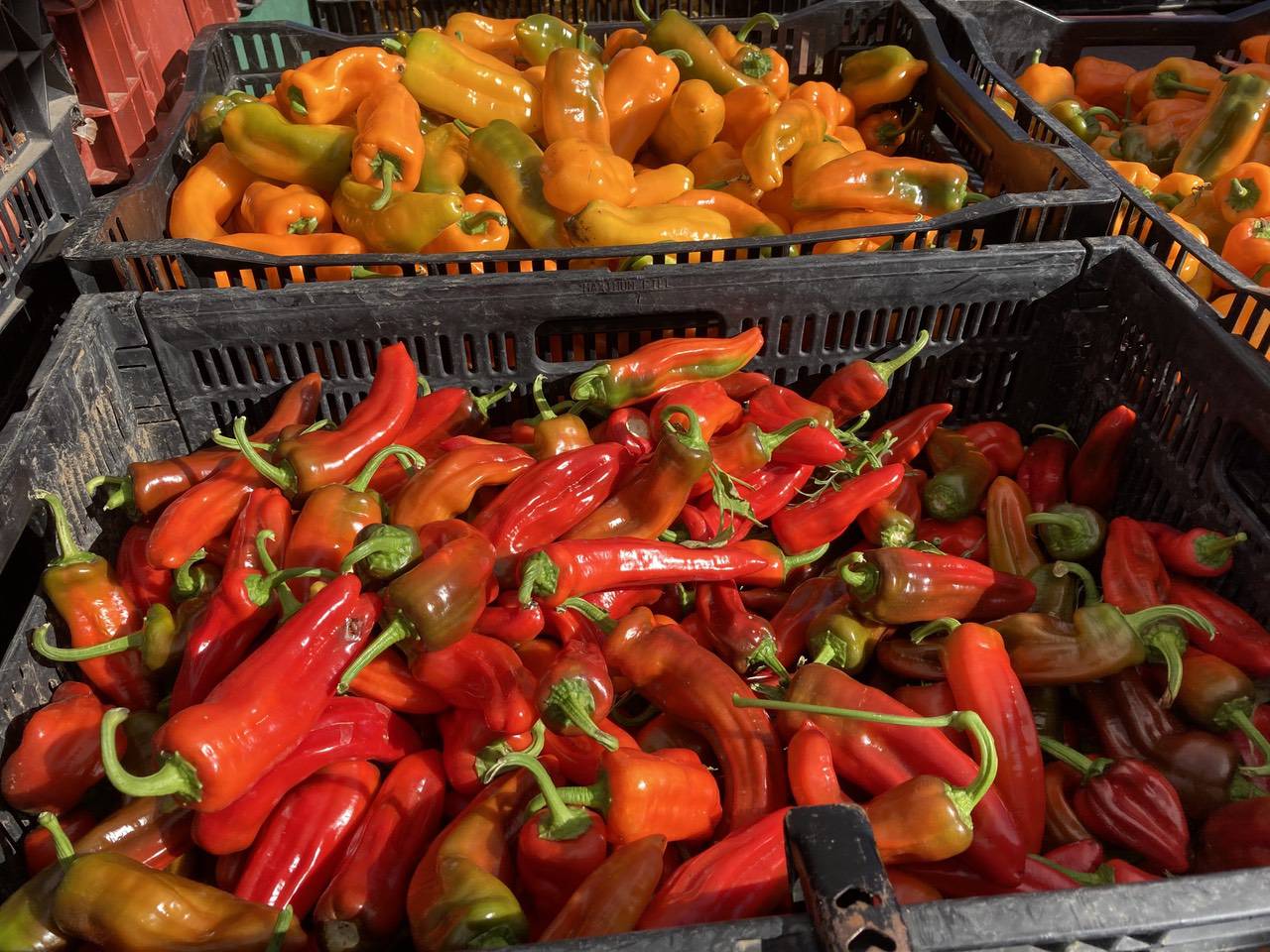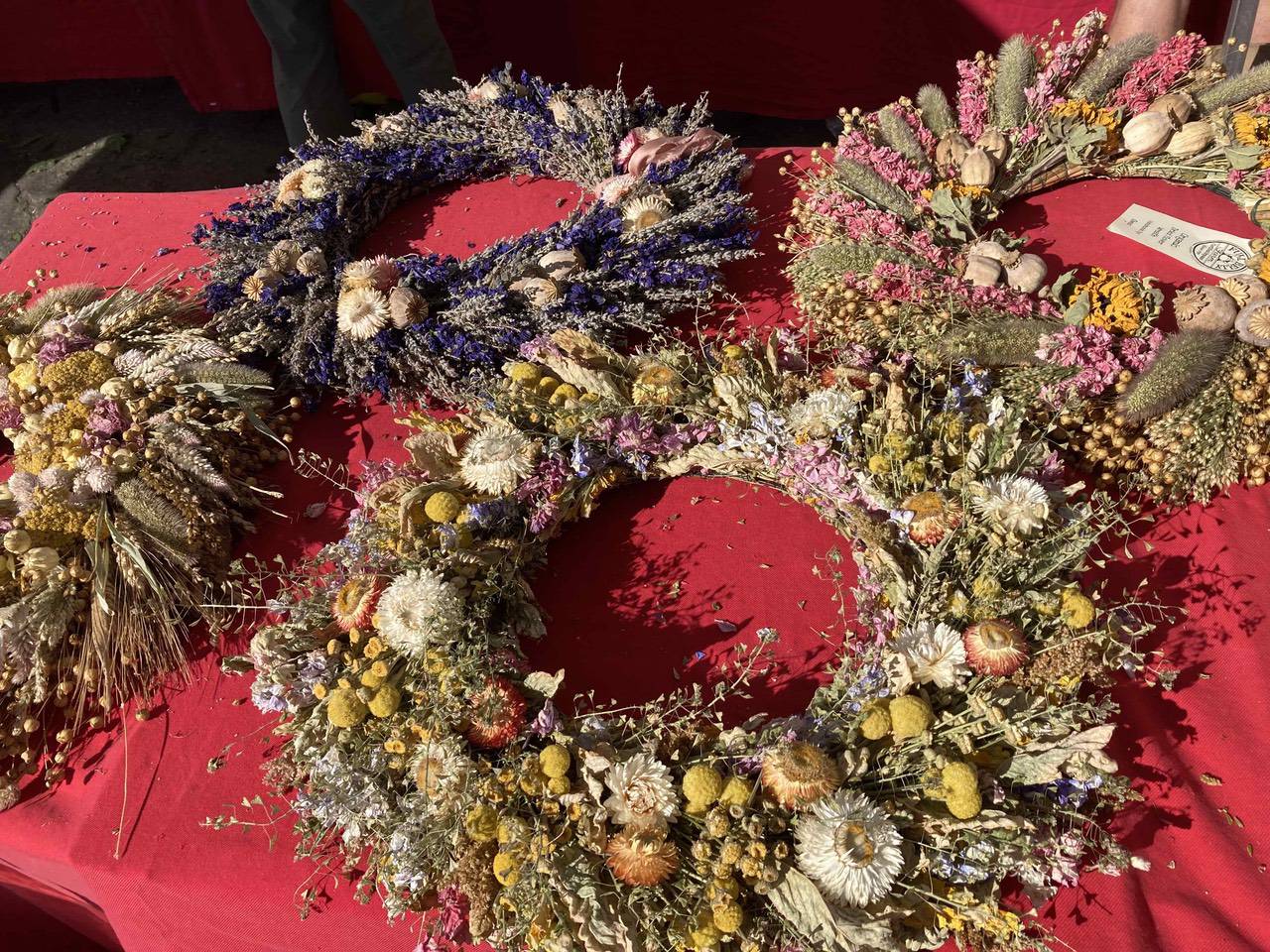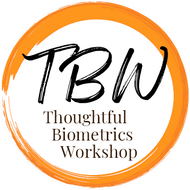Plex: 2 November 2022
College Students Assisting Swannanoa Watershed Group - The Wish Fulfilling Tree - Farmer’s Market Fall Output - Coalescing the Soil-First Industry - Thoughtful Biometrics; Self-Sovereign Identity
The Biweekly Plex Dispatch is an inter-community newspaper published by Collective Sense Commons on first and third Wednesdays of each month. Price per issue: 1 USD, or your choice of amount (even zero).
In This Issue
- College Students Assisting Swannanoa Watershed Group
- The Wish Fulfilling Tree
- Farmer’s Market Fall Output
- Coalescing the Soil-First Industry
- Thoughtful Biometrics; Self-Sovereign Identity
College Students Assisting Swannanoa Watershed Group
by Kevin Jones, with Peter Kaminski
Ten students from Warren Wilson College have been assigned to work with our Swannanoa Watershed “Doughnut Economics” group, which will expand our reach and effectiveness.
Together with two faculty members, they will be following our group's research into the social safety net and the gaps in the Swannanoa Watershed.
We have identified a group of high-functioning, collaborating, local nonprofit organizations, and we will be asking them these key questions:
1. What is the main problem you're working on?
2. What is the scope of the problem?
3. What key roadblocks have you run into while working to solve the problem?
PETE: How do you find those high-functioning local collaborating nonprofits?
KEVIN: Find functioning collaboratives, and circle inward.
PETE: Say more?
KEVIN: We started by differentiating between nonprofits providing relief “in the moment” – diapers for parents with babies, home-delivered meals – and those working on long-term change – legal services, or providing infrastructure for homeless support groups. We get more leverage by helping the latter.
We then found that some of those long-term change nonprofits worked cooperatively together, with shared resources or infrastructure.
It can be hard for nonprofits to admit to themselves and their funders that they aren't good at everything. The ones who do, and work together with other nonprofits to overcome obstacles, are more collaborative, and more able to stay focused on their mission and accomplish their goals.
When we start identifying providers of shared resources, we can also ask them, “which other groups do you know who are really effective?”
That has allowed us to identify the groups who are mostly likely to collaborate with us, and able to get the most benefit towards their mission.
The Wish Fulfilling Tree
by Ken Homer
There is an old parable from the Hindu tradition that has been around for thousands of years. It concerns a magical, wish fulfilling tree. I have heard two versions of the tale, though I am certain that others exist.

The first version goes like this: One day, a man who had been walking for many hours came upon this tree and so lovely did it look and so intoxicating was its scent that he sat down under its branches to rest. As he was resting, he realized he was thirsty and he thought to himself, I wish I had something to drink. Instantly, a vessel filled with cool spring water materialized next to his hand and he drank his fill. Then he noticed that his stomach was growling and that he was quite hungry. I wish I had something to eat, he thought and to his amazement a sumptuous meal appeared before him. He ate the repast with gusto. Then he realized his legs were tired and sore from all the walking and he thought to himself, I wish I had someone to massage my legs. Instantly a young woman appeared and began to massage his aching muscles.
Amazed at his good fortune he stifled a yawn and realized he was exhausted. He thought to himself, I wish I had a nice bed to sleep in. Instantly a bed appeared that was the most comfortable he had ever experienced. As he was dropping off to sleep, he realized that he was in a remote part of the forest, known far and wide as the abode of many tigers. He thought to himself, I sure hope a tiger does not come along and eat me while I sleep. Instantly a tiger appeared and feasted upon the man.

The second version is much like the first except that the traveler did not think of a hungry tiger and had a nice long nap in that wonderfully comfortable bed. Upon awakening, he thought to himself that there must be a genie around somewhere. He got up to investigate and soon came upon a tree even lovelier than the first. Beneath it sat a small but powerfully built man. The man called to him.
Come, come! I am a genie who has been bound to this tree for so long I can’t recall. If you agree to take me with you the spell will be broken, and I can leave. I will give you anything you wish for in exchange for freeing me. But know this, if you run out of things for me to do, I will devour you.
The man thought it over a bit, it sounded good, but the threat of being eaten was ominous. Finally, after considering all the work to be done at his home, he agreed, and the genie accompanied him home.
When they got to the man’s farm, the man ordered the genie to dig a new well. No sooner did he request this than the well was completed. He ordered a new fence to be built and it appeared almost instantly. Concerned that he would quickly run out of tasks, he told the genie to count slowly to 10,000 and while he was counting, he sought out the village sage and explained his predicament and asked for help.
The sage advised him to have the genie construct a tall pole and whenever he could not think of a task for the genie to complete, to have the genie climb up and down the pole, which would keep him busy until the man had time to think of other tasks.
The man followed the sage’s advice, and he lived happily in the ever after.*
There are numerous interpretations of this parable. Some say the wish fulfilling tree is God, others nature, still others say it points to our own mind’s ability to manifest our desires – though usually not quite so instantly.
It is the last interpretation that interests me the most in this moment of human history. Our collective minds have indeed manifested so much. Billions of people now enjoy a lifestyle that was unimaginable for the majority of people who ever lived. Even the mightiest Emperors housed in the most opulent palaces did not enjoy the standard of living that most people in the middle class of the Global North have access to today.
As a facilitator, I have learned that a group’s attention is akin to wish fulfilling tree. Ask them to dream about a tasty meal and soon everyone gets nourished. Focus them on hungry tigers and watch tensions and tempers flare. The role that the media plays is very much that of a facilitator, constantly directing the attention of billions of people.
The collective awareness and output of eight billion minds is a wish fulfilling tree. The trick, as we navigate the turbulence between eras, is to minimize the number of people turning toward thoughts of hungry tigers and optimize those who dream of a thriving world.
This is where the media, as facilitators of collective attention, is failing us. There are far more people dreaming a thriving world than there are people worried about hungry tigers, but hungry tigers grab most of the headlines 24/7/365!
What would a media system that served the correct functioning of our wish fulfilling tree look like? What would be some simple steps to take to change the focus of the media from “if it bleeds it leads” to “if it heals it’s our deal”?
* Most of us are familiar with “happily ever after.” However, the original phrase was “happily in the ever after” which gives a very different slant on things.
Farmer’s Market Fall Output
by Ken Homer




Coalescing the Soil-First Industry
by Marianne and Holly for Planetary CARE
Planetary CARE is a collaborative commons that is coalescing the fractioned soil-first industry into a global movement.
We are moving into our fundraising phase to build global and regional soil first food networks across the food value chain
We will bring these communities together to provide access to valuable education, training, capital, and proven solutions. Providing access to rapidly advancing technologies – IoT, platforms, Web 3.0, virtual twins, etc. – is also critical for the soil-first enterprises in these communities to advance in an exponential fashion.
In parallel, we have been partnering with farmers to submit grants including for the recently announced USDA $2.8 billion to launch the carbon smart agriculture industry. And we have been sending team members and providing scholarships to attend Radical Transformational Leadership training as we integrate proven systems thinking frameworks into our approach.
To learn more about our efforts and how to connect and support us please visit us at Planetary CARE, or email us at contact@planetarycare.org.
Thoughtful Biometrics; Self-Sovereign Identity
by Peter Kaminski
I had the pleasure this week of chatting with Kaliya IdentityWoman Young. Most of it was catching up after too long, so I am a little sad to report that I do not have an interview with Kaliya to post this week. Maybe another time, after IIW XXXV, perhaps.
I did ask Kaliya for some her most interesting pointers, and she shared the following, for the OGM community and the Plex. Thank you, Kaliya!
Thoughtful Biometrics Workshop – Feb 13-17 '23

This is a bit of a sneak peek, because registration isn't open yet – although there is an RSVP form to save your place – but it's the start of another thing that Kaliya does so well. Find an important part of the tech world, where society needs to make progress, for the good of all, but where the various parties involved have not been able to communicate effectively, and bring them into communication.
In this case, it's biometrics – using unique physical characteristics to quickly and reliably identify human individuals. You, dear reader, are probably in one of two camps: biometrics give you hives; or biometrics are a key, cornerstone technology for the future.
Kaliya says that the use of biometrics is not going away, and so, how about we get both sides together and figure out how to use the technologies with care and foresight?
Scroll down on the TBW page to see who should be interested and who should attend this workshop. I'm so glad that it's Kaliya who is taking on this challenge, after her careful stewardship in the identity space.
Speaking of which, Kaliya did this great write-up:
Seeing Self-Sovereign Identity in Historical Context, by Kaliya Young, June 21, 2022.
I recommend the whole piece (and it's okay to scroll to the bottom to read the summary first), but here's a teaser:
... to consider deeper questions about why systems of birth certificates and other forms of documentation appeared in Europe centuries earlier. I believe that we have identity documents because we have non-kin-based institutions that require identity documents to function. These two things – documents and institutions (which have governance mechanisms) – together help create complex networked contemporary society and, below, I make this argument in several different ways.
Fans of the Big History books – The Dawn of Everything: A New History of Humanity (Graeber & Wengrow, 2021), or The WEIRDest People in the World: How the West Became Psychologically Peculiar and Particularly Prosperous (Henrich, 2020) – will likely appreciate Kaliya's take on SSI, and why it might be the ID solution that actually works for people, based on hundreds of years of use of paper credentials by humans interfacing with institutions.
Thank you for reading! Next edition will be published on 16 November 2022. Email Pete with suggested submissions.
Deep thanks and appreciation to Charles Blass, Ken Homer, Kevin Jones, Forrist Lytehaause, Marianne Wyne, and Kaliya Young, for their contributions to this issue.